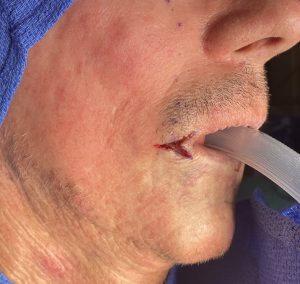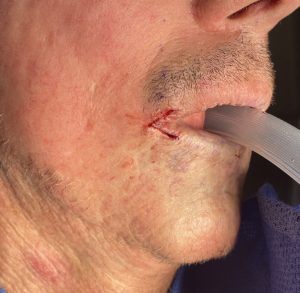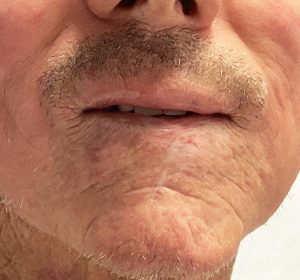Background: Microstomia is defined as a shortened size of the mouth that causes some functional impairment. There are multiple causes of microstomia from congenital to traumatic. There is also aesthetic microstomia, better called a small mouth, which has no functional impairment but is aesthetically out of balance to the rest of the facial features.
Microstomia is most problematic in those in which the mouth size was once normal and is now shortened. This is an expected sequelae with a portion of the lip is removed due to cancer resection. The lip is very flexible so the most common form of lip reconstruction when a portion of it is removed is to pull the two ends together of which there is a variety of techniques to do so. While this allows the gap in the lip to be closed it does so at the expense of the mouth corners which are pulled inward. This results in a small mouth sizewith a decreased oral aperture and lip tightness across the reconstruction site. This contracted mouth effect will be magnified if postoperative radiation treatments are done as well.
Improving microstomia requires relocating the mouth corners outward through various tissue rearrangement techniques. The V-Y advancement flap, as is commonly used in reconstruction of skin defects and very popular in fingertip amputation reconstructions, can be inversely used for relocating the mouth corners out laterally.
Case Study: This middle-aged male had a history of lower lip squamous cancer which was treated by two central lip resections. Reconstruction was done by bilateral full-thickness lower lip flaps mobilized by back cuts on each side along the labiomental fold. Postoperative had radiation to his chin and upper neck. Four years later he remained disease free but had a contracted mouth and tight lower lip. By dropping a vertical line down from the pupil of each eye the left mouth corner was 5mms inward and the right mouth corner 7mms inwards from it.
Under general anesthesia the chin and lower lip were initially injected with 10cc of concentrated fat from the abdomen in an effort to improve the quality of the thin contracted tissues.
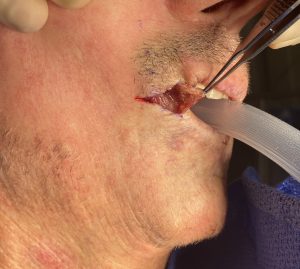
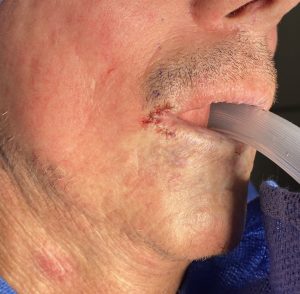
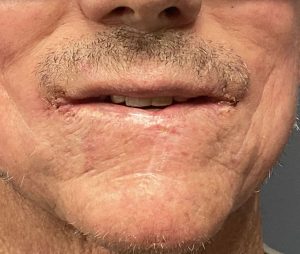
It will require 6 to 8 weeks to determine how the mouth widening is maintained and the scars appear. It will take a similar amount of time to determine the effects of the fat grafting. He will undoubtably benefit by another round or two of injection fat grafting to optimize the soft tissues.
Case Highlights:
1) Microstoma as a result of a tight lower lip and radiation to the chin poses challenges in creating a more normal mouth width and chin appearance.
2) The V-Y advancement technique is an effective method for a 5 to 7mm expansion of the corner of the mouth.
3) Fat injections to the chin and lower lip are a proven strategy to improve the tissue quality of irradiated tissues with the goal of making them more supple.
Dr. Barry Eppley
World-Renowned Plastic Surgeon




